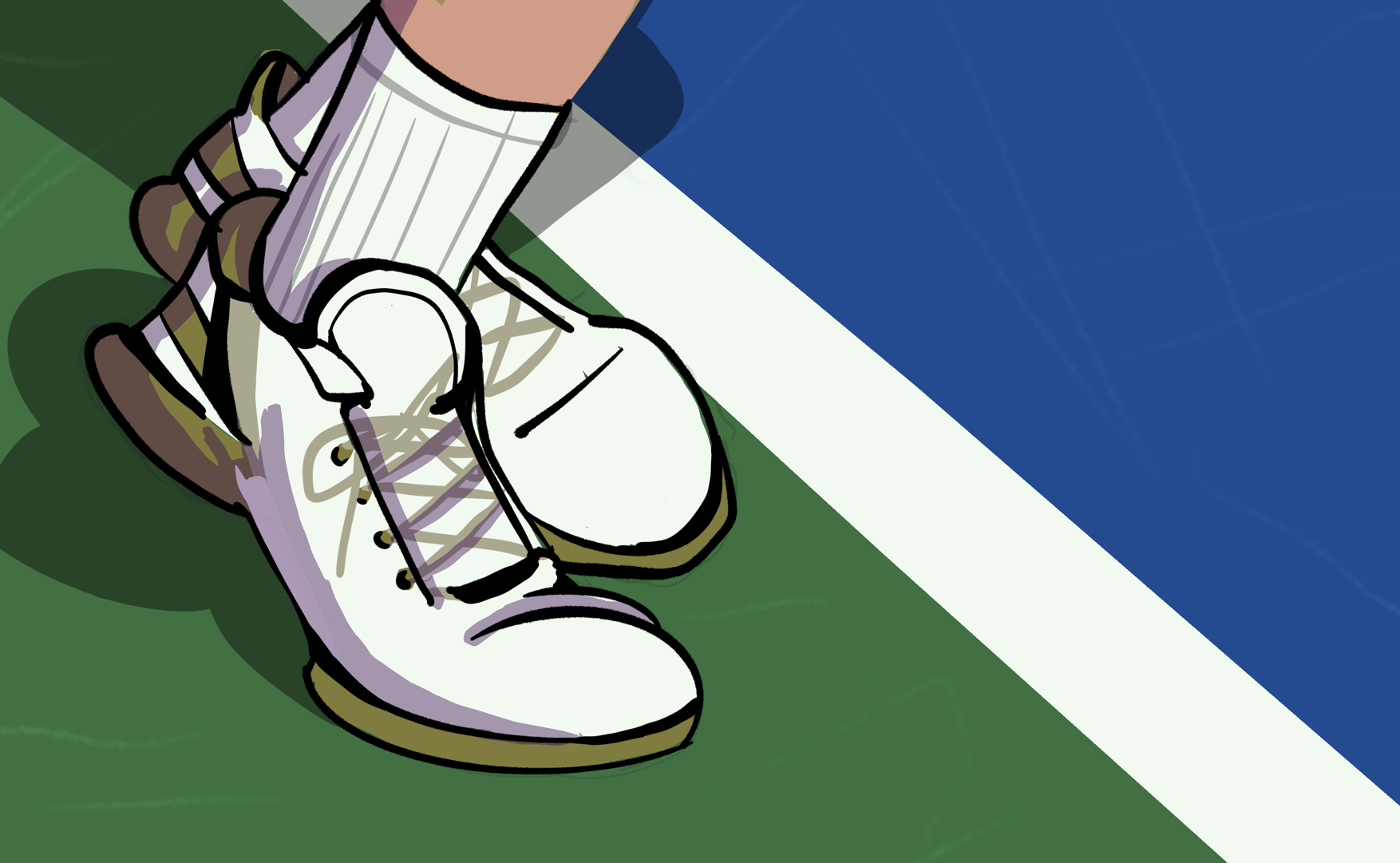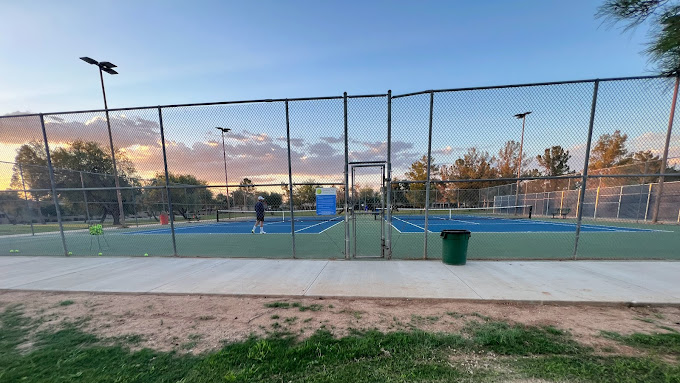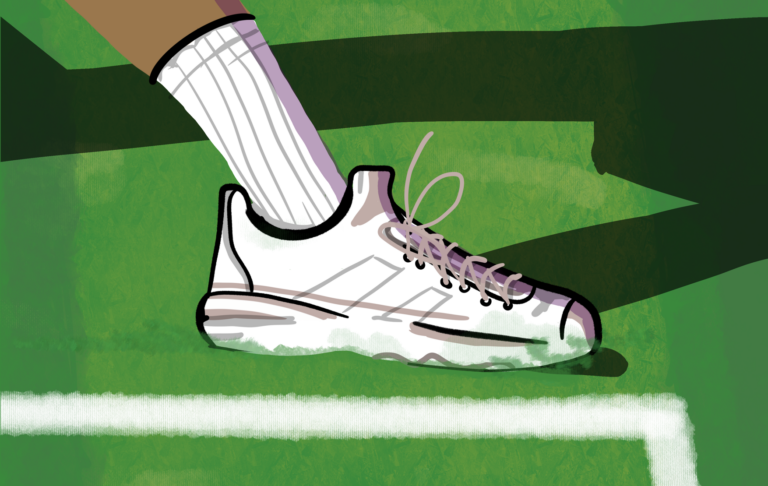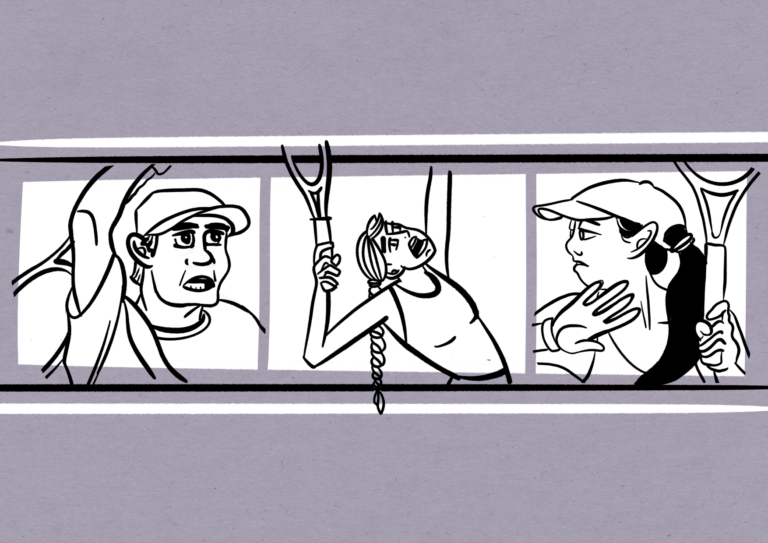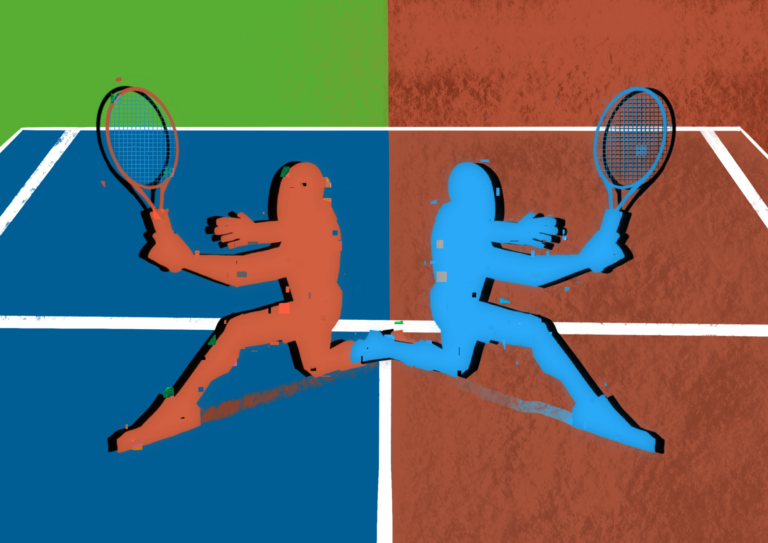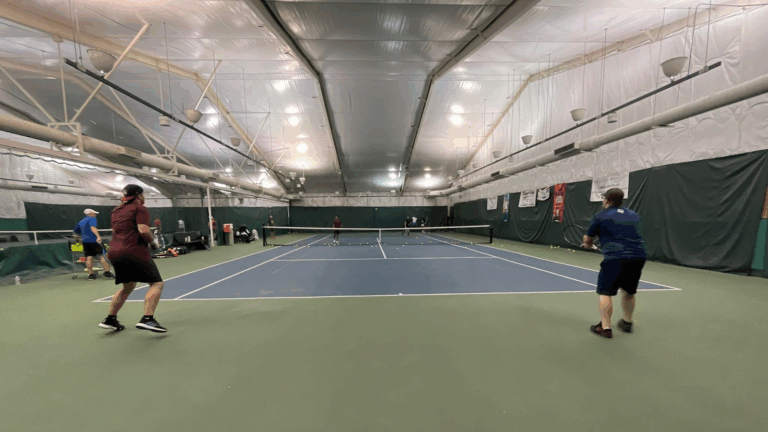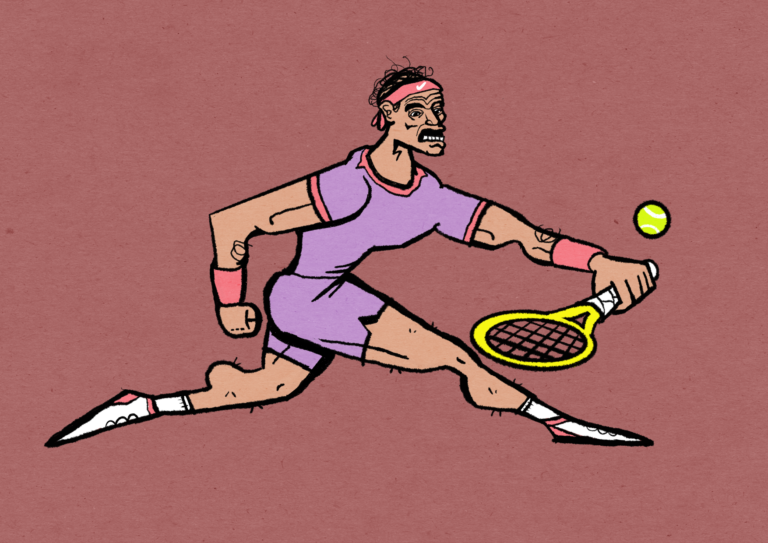What Is a Foot Fault in Tennis?
Tennis has a lot of rules, many of which deal with the lines surrounding the court. One of the most frustrating rules in tennis can come into effect before the point even starts. This is the foot fault rule. Most sports have rules dealing with overstepping on the boundary of the court. In tennis, foot faults occur when serving, leading to a loss of the point. Find out why foot faults happen, how to avoid them, and when to call them.
A foot fault is an illegal move in tennis that occurs when a server commits one of the four following violations. If the serving protocol is violated, and the offended player is caught, this can lead to a warning or point loss. The most likely instances of foot faults involve a serving player stepping over the baseline when serving or jumping into the court before making contact with the ball. There is, however, more about the specific types of foot faults.

Tennis Foot Fault Types
The International Tennis Federation (ITF) has guidelines for four specific foot fault types. These are outlined in the ITF Rules of Tennis. The four instances are as follows:
“During the service motion, the server shall not”:
- Change position by walking or running, although slight movements of the feet are permitted; or
- Touch the baseline or the court with either foot; or
- Touch the area outside the imaginary extension of the sideline with either foot;
or - Touch the imaginary extension of the center mark with either foot.
What does this mean when broken down?
The first foot fault concept is a little complicated because it’s the least likely. This first foot fault rule means that once you’re in serving position behind the baseline you should basically be stationary and follow the standard service motion. If you do something unorthodox or steer from the normal foot movement, this could be deemed an illegal foot fault.
The second instance is the most popular and can sometimes result from a careless mistake. If you’re rushing through your serve, you might not realize that your feet are in the wrong spot. This can also happen if you get to a point where you are fed up with your serves going into the net–you might, in this instance, try to scoot forward with the hopes of getting your serve further. If either of these cases sound like you, be sure to check your positioning.
Check out the foot fault tennis examples below to understand what the ITF rules also refer to.
Tennis Foot Fault Examples
- Stepping over the baseline: As just mentioned, the classic foot fault tennis example results from stepping over the baseline, either in serving positioning or as the server goes through their motion.
- Touching the imaginary extension of the center mark: This foot fault tennis example refers to the little white line that marks the center of the court at the baseline. Even though this line does not extend all the way back to the end of the court, ex. all the way to a fence or wall, you have to imagine it does in order to avoid a foot fault. Be sure to stand either to the left or right side of this imaginary line when you’re serving to avoid a foot fault.
- Running during the serve: When you’re serving, go through the proper serve motion without any extraneous movement! Don’t move laterally or walk or run. A foot fault is not just based on the lines. Moving extraneously is considered a foot fault as well, because it means your feet are out of position.
- Jumping into the court: Another classic foot fault instance occurs with jumping into the court before making contact with the ball. You can jump into the court, yes, but this has to happen after you make contact with the ball and serve it.
- Out of position: Another line to be aware of is where the singles and doubles alleys exist. When serving, don’t forget to imagine that the lines that designate the doubles alley and out of bounds to the right and left of court extend all the way to the wall or the end of the court. Why is that? Another foot fault risk can occur if you move into that alley or too far out white. Regardless of whether you’re serving singles or doubles, stay inside the singles court and behind the baseline when serving!
Who Can Call a Foot Fault?
This depends on the circumstances. If you are playing in an official match with an umpire or referee, or there’s a line judge, these figures would call a foot fault. Sometimes, these referees are moving between courts so they don’t see every serve. If you’re worried about your opponent being a repeat offender with foot faults, then alert the referee when they pass your court. You can do this in a polite, courteous way between points or games without offending your opponent by pulling the referee off to the side.
If you’re playing in a match without any referee, then you will be the one calling a foot fault on your opponent. How can you do this? Alert your opponent in a friendly manner with a warning. You could let them know that you think their foot might have touched the line. If these efforts don’t work, then you will have to become more serious. Ultimately, tennis is a game of integrity, so there might be times when you don’t see yourself foot fault and you have to trust your opponent if they call a foot fault on you. In order to avoid this instance, follow these two tips below to minimize foot faults.
How to Minimize Foot Faults?
- Slow down! Easier said than done, the biggest advice for minimizing foot faults is just to slow down. Why? Sometimes when players start trying to serve too quickly and rush through the motion, they don’t realize where they’re standing. If you’re rushing through your serve, or more focused on not hitting it out of bounds or in the net, you might accidentally foot fault. This is why, before you serve, take a deep breath. Ensure you’re in proper positioning and check your feet before serving. Take the extra second.
- Practice. If you don’t practice serving often enough, you might be subconsciously frustrated with your serve and slide into the court. A foot fault might not even be intentional, but if you don’t do enough reps with your serve, your movements might lead you to foot faulting. This is why it’s super important to add services to your tennis practice routine. When you warm up for a match, don’t forget about serving deliberately and getting your positioning down.
Now you know what a foot fault is: an illegal move that results from four potential violations during your service. Remember the four kinds of foot faults: touching the imaginary center line, touching the imaginary sideline, touching the baseline, or changing your movement. Be courteous and have integrity when it comes to calling a foot fault and dealing with your opponent if there’s no line judge or referee. The bottom line with foot faults is that there is a lot to keep track of, certainly! As a player, focus on these two tips to control your errors: slow down and practice.

